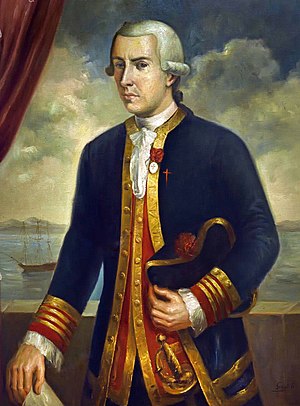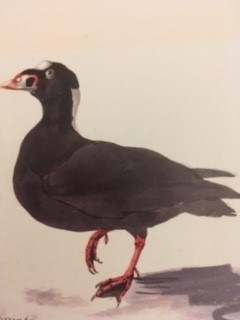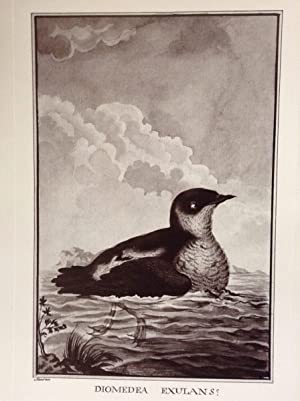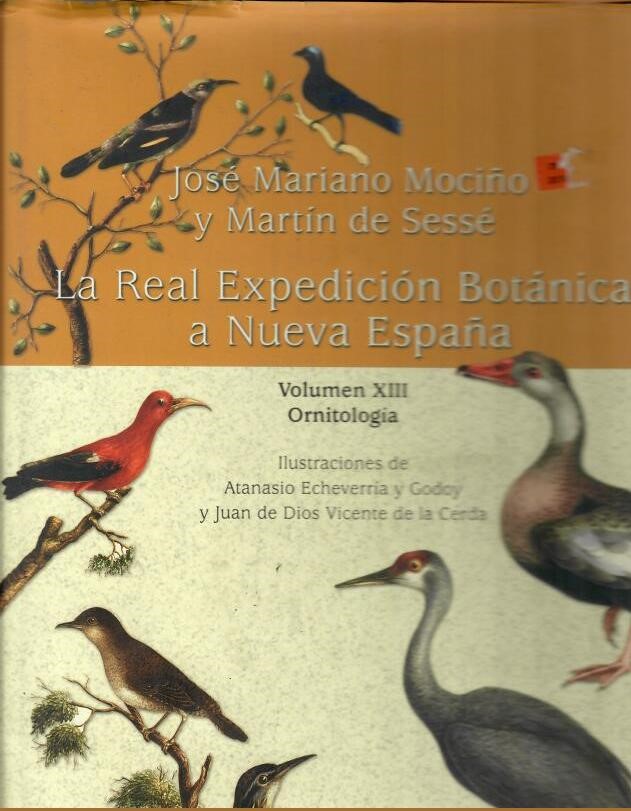Search
Regions
The Juan Francisco de la Bodega y Quadra Expedition
(1792)
Introduction
A more complete summary of the history of Spanish expeditions and interest in the Pacific Northwest of North America will be found in the paper on Alesandro Malaspina (1791) elsewhere in this section. An excellent history of Spanish involvement in the area will be found in the book printed by the Government of Spain for the World Exposition in Vancouver in 1986. To the Totem Shore: The Spanish Presence on the Northwest Coast.
The Spanish, who colonized Central and South America in the 16th Century, historically had a proprietary interest in areas further north in the Pacific northwest.
By the 1770s Spain was concerned about growing British interest in finding the Northwest Passage and by Russian exploration along the Alaskan coast. These developments encouraged the Spanish to finance a series of expeditions to the American Pacific northwest, British Columbia and Alaska.
The Spanish interest in the area was initially political and economic. Unlike earlier trips, two expeditions sent to to the area in the early 1790s demonstrated a growing interest in science.
The first expedition was commanded by Alejandro Malaspina who led an around the world scientific expedition. Malaspina visited the area in 1791 and 1792. For details see the paper on the Malaspina expedition found elsewhere in this section.
The second Spanish expedition was commanded by Juan Francisco de la Bodega y Quadra (1743-1794) in 1792. This expedition included botanist and physician, Jose Mariano Mocino (1757-1820), naturalist Jose Maldonado, and Mexican artist Atanasio Godoy Echeverria.

Wikipedia: Juan Francisco de la Bodega y Quadra
Mocino, Maldonado and Echeverria were part of a larger long-term survey of the Royal Scientific Expedition to New Spain (1787-1803) led by Martin de Sesse y Lacasta (1751-1808). The expedition worked almost exclusively in Spanish possessions in the Caribbean, Mexico, California and Central America. For numerous reasons most of the documents and artwork were never published at the time, most of it only coming to light in recent times.
Mocino, born in Mexico, was subject of an extensive biography by Dorothy Tanack de Estrada in the Biographical Dictionary of American and Canadian Naturalists and Environmentalists. Despite a fairly impoverished background he attended university, graduating with a bachelor of medicine from the University of Mexico in 1787. He held university teaching positions in Mexico when his application to join the expedition was accepted by Martin de Sesse. Mocino was the only Mexican scientist selected for the expedition.
Quadra was sent to the Nootka area in the spring of 1792 to attempt to negotiate a settlement of the boundary dispute with the British. The expedition also carried out surveys and scientific research.
Nootka was an aboriginal settlement in a protected harbour on the west coast of Vancouver Island. The Cook expedition landed there in 1778. The publishing of the results of the expedition in 1784 led to considerable commercial interest in the sea-otter fur trade. See the paper on the Cook Expedition found elsewhere in this section. For the next few decades Nootka became the focal point of this trade in British Columbia. As a result Nootka quickly became one of the key west coast ports between San Blas in Mexico and the centre of the Russian American Company operations based at Sitka. Alaska.
The circumstances which created the conflict that developed at Nootka are summarized by Robin Inglis in an article "A Spanish Heritage for British Columbia" in British Columbia Historical News 34 (1991).
A very brief summary, largely based on the Inglis article, is provided here. In 1788, Estebàn José Martinez, Spanish navigator and explorer, visited the coast of British Columbia north to Alaska. During his visit he was informed that the Russians were planning to establish a fur-trading base at Nootka.
Largely based on rumour Martinez returned to Nootka in 1789 with the intention of establishing a settlement. On his arrival at Nootka, on May 5, 1789, he was surprised to find the merchant ships of British trader John Meares. Soon after Captain James Colnett with Chinese workers arrived. According to some sources Colnett told Martinez that he had received orders from England to build a trading post at Nootka.
During a heated argument Martinez arrested Colnett and ordered the seizure of two English ships. During the ensuing melee an aboriginal was killed. Martinez subsequently built a small fort at Yuquot in Friendly Bay, Nootka. His fort included barracks, a cannon battery and officers quarters. This tiny settlement, named San Lorenzo de Nutka, was the first European establishment in British Columbia.
The capture of British ships created a diplomatic incident between England and Spain. Following negotiations, in October, 1790, the two countries signed the Nootka Bay Convention in Madrid. Under the terms of this treaty, Spain and Britain recognized each others' rights to the northwest coast north of California. Commissioners from each country would be named to settle the details of the agreement.
The two commissioners named were naval captains, Bodega y Quadra, of the Spanish Navy, and George Vancouver of the Royal Navy. They met at Nootka in August 1792. In spite of their efforts, they could not agree on the details of the transfer of properties specified in the Convention and, by mutual agreement, submitted the problem to their respective governments.
Ornithological Results of the Quadra Expedition
This is not a definitive paper on the ornithological results of the Quadra expedition as it relates to British Columbia. Relevant documents examined include:
- a paper written in The Condor which examines the manuscripts of Mocino,
- Michael Layland's In Nature's Realm Early Naturalists Explore Vancouver Island which contains his analysis of Mocino's bird list from Nootka in his manuscript of Noticias de Nutka.
- a biography of Mocino by Dorothy Tanack de Estrada
- a recent 13 Volume work José Marino Mocino y Marin de Sesse Royal Botanical Expedition to New Spain which contains a Volume on the Ornithological results of the expedition.
In 1792 Mocino appears to have collected primarily at Nootka while Maldonado and Echeverria investigated islands and coastal areas to the north. A circumnavigation of Vancouver Island, overseen by Quadra, was undertaken by Galiano and Valdez. Since the latter was initiated by Malaspina, details will be found in the paper which discusses the Malaspina expedition.
The Condor Article
In total the Martin de Sesse y Lacasta expedition of which Quadra was a part, produced 1,989 watercolour drawings and sketches which now reside largely in the Hunt Institute for Botanical Documentation at Carnegie Mellon University, Pittsburgh. Of these fully 1,800 feature botanical subjects. The remainder are comprised on birds, mammals, reptiles and insects.
The ornithological material in the form of paintings and manuscripts that has survived is almost exclusively from the Mexican portion of the Expedition. It has been examined in considerable detail. The results were published in The Condor in 2007. The abstract summarizes the overall results:
Of a total of 83 [bird] paintings available, we were able to identify 78 to species, and 5 only to family. In the manuscripts, 290 species were treated, but for 27, the descriptions were fragmentary and insufficient for identification; of the remaining 263 species, we arrived at a species-level identification for 242, and identified the remainder to genus (19) or family (2). The recent discovery of these ornithological texts and paintings offers a unique view of the history of ornithology as well as of the environmental history of Mexico.
The Condor article provides a summary of the history of the Expedition's manuscripts and artwork. The American Society of Botanical Artists also provides an overview of the tortured history of the drawings from this expedition at: http://www.asba-art.org/article/botanica-collected-hunt-18th-century-expedition-illustrations
A detailed examination of the 242 bird species in artwork and manuscripts discussed in The Condor reveals only three that can be attributed to the Pacific Northwest. It seems evident, given the emphasis of this article, it does not attempt any in-depth detail of the few records cited. This is discussed in the next section which examines Mocino's Nootka bird list. The birds and the associated text in Condor is as follows:
Marbled Murrelet
Diomedea exulans, [Brachyramphus marmoratus (Gmelin 1789)]. [Image only (MNCN)]. (This image, erroneously labelled as D. exulans, likely pertains to material obtained on the expedition to Nootka, although there are occasional Mexican records [particularly off the north coast of Baa California.
Tufted Puffin
Alca cirrhata, [Fratercula cirrhata (Pallas 1769)]; 1:359. Open ocean between Kamchatka and Nootka Island [Alaska, United States].
Red Crossbill
Loxia curvirrostra, [Loxia chiaroscuro (Linnaeus 1758)]. [Image only (MNCN)]. (The painting and background depicted suggest that this specimen may have come from the expedition's outing to the Pacific Northwest of North America).
Despite the close ties between natural scientists in the late eighteenth century, specimens collected and illustrations made from the Malaspina and de Sesse-Quadra expeditions were not made available to the small body of botanists and zoologists working in Britain, France, Holland and Germany.
The reasons can be found in the singular peculiarities of the two expeditions which were no doubt exacerbated by the fact that the naturalists were working in Spanish, the Napoleonic Wars created a chaotic period for record-keeping, and the continuing political conflicts between Spain and the rest of Europe.
Layland's examination of Noticias de Nutka
Mocino set down his observations at Nootka in his Noticias de Nutka. Noticias was largely an ethnographic and historical work. It contained two appendices: a dictionary which included the translation of over two hundred aboriginal words, and a list of botanical and zoological species based on the Linnean system. The list contains almost 400 entries including 230 botanical species and about 160 zoological specimens including birds, mammals, insects fish and crustaceans.
The list is probably included in an edited translation of Noticias by Iris Wilson published in 1970. Unfortunately it is not easily accessible. An examination of what appears to be an original hand-written copy of Noticia available on line through Yale Library contains Mocino's dictionary. Unfortunately it does not contain the list of botanical and zoological specimens. The URL is: https://collections.library.yale.edu/catalog/10061301
With limited access to the bird list this paper relies on Michael Layland's In Nature's Realm Early Naturalists Explore Vancouver Island who did examine it. Layland notes that there are a few fundamental problems with identification. Mocino did not provide the locations of the birds collected or observed. He also included some birds observed by Maldonado who also did not include locations. The inclusion of some obvious tropical seabirds such as Frigatebird and Tropicbird on the list suggests that other birds, possibly passerines, found in Mexico and B.C. might also be on Mocino's "Nootka" list. In addition, Layland points out that Mocino, unfamiliar with North American birds, occasionally resorted in his descriptions by equating them with more familiar European equivalents. This lead to translators making some obvious errors by including European Starling, Skylark and Yellow Wagtail on the Nootka list. In the circumstances the value of Mocino's bird list may be very limited.
In sections of the main text, Mocino occasionally includes useful observations on birdlife. The passage set out below also confirms the limits of his ornithological expertise (Noticias:16):
I realized that birds were scarce [at Nootka] because of the small number I was able to arouse. I was barely able to see a woodpecker, a hook-billed sparrow [Crossbill species], two hummingbirds, and two larks [possibly both just the very diverse plumages of adult and juvenile Horned Lark]. The rest of the birds only inhabit the seashore, because it is the source of their food but even there, the number of species is not abundant nor is the incidence great of the few species that do exist. Here are the white-headed falcon [possibly Bald Eagle], yellow-speckled falcon [based on the former reference to "falcon", unidentifiable] sparrow hawks [unidentifiable] , crows [Northwest Crow], herons [likely Great-Blue Heron], geese [unidentifiable], seagulls and so forth.
Layland notes that Quadra sent a reconnaissance expedition northwards under the command of Lieutenant Jacinto Caamano, which included Maldonado and Echeverria. Caamano ventured as far as Bucareli Bay on the west side of Prince of Wales Island (Alaska), then headed south to explore Hecate Strait, between Haida Gwaii and the mainland, and finally investigated a possible western entrance to the Northwest passage now known as the Douglas Channel, south of Prince Rupert. The expedition was carried out over three months from June to early September. It seems likely that the majority of the time was spent in British Columbia waters.
Layland quotes a few birds listed by Maldonado from Bucareli Bay as follows:
...falcons, stormy petrels, sandpipers, oystercatchers, gulls, a new variety of woodpecker, snipes, linets, crows
The ornithologist Pease in his book published in 1968 Birds of the Early Explorers in the Northern Pacific attempted to identify these birds. Maldonado's observations, generally as vague as Mocino's, are virtually impossible to identify. Since Buccareli Bay lies outside of British Columbia waters it seems unnecessary to speculate.
The research carried out by Mocino and Maldonado, largely in British Columbia, resulted in a series of drawings and watercolours of plants and birds and images of native peoples and scenery. These images were executed by Mocino and Atanasio Echeverria y Godoy, artist-assistant to the naturalists.
Michael Layland provides the following list of bird Illustrations, likely from British Columbia, along with the artist and collecting institution:
| Bird | Arist | Institution |
|---|---|---|
| Surf Scoter (male) | Echeverria | Toner Collection, Hunt Institute |
| Marbled Murrelet | Mozino | Ministry of Foreign Affairs, Spain |
| Red Crossbill | Echeverria | Ministry of Foreign Affairs, Spain |
| Sandhill Crane | Echeverria | Toner Collection, Hunt Institute |
The Condor article does not list the Surf Scoter, a common bird along the coast of Vancouver Island in summer. The illustration below, a male Surf Scoter by Echeverria, is labelled Anas Coronata. Toner Collection #6331:0287

The Sandhill Crane illustration in the Toner collection, painted by Echeverria, may well have been drawn from a bird collected in British Columbia. The Condor listing however for the Sandhill Crane below makes no reference to the Pacific Northwest:
*Ardea mexicana*, [Grus canadensis (Linnaeus 1758)]; 1:412, [H]. Lakes across Mexico. (The painting is of *Nycticorax nycticorax*, but the description is of *Grus canadensis*).
Sandhill Cranes were noted by Haenke of the Malaspina Expedition at Nootka in 1791.
The Marbled Murrelet and Red Crossbill were illustrated from the collection of the Ministry of Foreign Affairs (La Real Expedition:352-354). The Marbled Murrelet illustration represents first observation for the province. Red Crossbills were collected by the Cook Expedition.

Linn. 155: Diomedea Exulans. (Marbled Murrelet). Ministerio de Asuntos Exteriores La Real Expedicion Botanica q Nueva Espana 1787-1803 p.189
Tanack de Estrada's biography of Mocino
Dorothy Tanack de Estrada in her biography of Mocino in the Biographical Dictionary of American and Canadian Naturalists and Environmentalists outlines the tortured history of the Mocino and Echevarria artwork that Mocino took to Spain at the conclusion of the Royal Scientific Expedition in 1803. Fortunately, for posterity, of the 1400 drawings by Echeverria, 900 were saved when copied by Swiss naturalist Augustus De Candolle. The original 1400 were apparently lost.
Royal Botanical Expedition to New Spain, 13 Volumes
On the occasion of the celebration of the Centennial of the National Autonomous University of Mexico, the Centennial of the Revolution and the Bicentennial of Independence (1810-2010), a large-scale work on botany and zoology was published: José Marino Mocino y Marin de Sesse Royal Botanical Expedition to New Spain. It was originally composed in 12 volumes, in which was reproduced more than 2,000 watercolours by the artists Atanasio Echeverría and Vicente de la Cerda, beautifully printed in full colour, accompanied by each of their respective descriptions in bilingual, Latin-Spanish.
These limited edition volumes are expensive and not available on-line. Background details in Spanish make it difficult to know what might be included in Volume 13, "Ornitologia" which appears to be a specific add-on to the initial twelve volume set. The English translation of this work is: The Royal Botanical Expedition to New Spain Volumes I-XIII. Ref: http://www.librosdehumanidades.unam.mx/libro.php?id=PUB-002114
An image of the cover of Volume XIII "Ornitologia" is presented below. This volume is likely to be a repeat of the contents of the 2007 Condor article with added illustrations. At this time is is unclear whether it contains more artwork and text from the Northwest Pacific portion of the expedition. Further examination may add important new details of the birds collected during the Quadra Expedition to British Columbia.

Later ornithologists, (Swainson and Richardson, 1831), reviewed the known North American ornithological literature. They had access to the British Museum archive, the massive Banks artwork and manuscripts, and an extensive network of fellow European ornithologists. Without access to the Spanish material they included no ornithological material from either the Malaspina or Quadra expeditions.
Elliot Coues in his extensively annotated "Bibliography of North American Birds" published as an Appendix in his Birds of the Colorado Valley (1878) also does not include any Spanish sources from this period.
Bibliography
- Beddall, Barbara G, "Scientific Books and instruments for an eighteenth century voyage around the world: Antonio Pineda and the Malaspina Expedition". Journal for the Society of the History of Natural History. 9 (2) pp 95-107
- Coues, Elliott. 1878. Birds of the Colorado Valley. Washington, D.C.: Government Printing Office
- Inglis, Robin. 1991. "A Spanish Heritage for British Columbia". British Columbia Historical News. 34 (1991). Victoria: British Columbia Historical Federation
- Real Jardin Botanico. 1987. La Real Expedition Botanica a Nueva Espana, 1787-1803. Madrid: Real Jardin Botanico
- Dickenson, Victoria. 1992. First Impressions, European Views of the Natural History of Canada from the 16th to the 19th Century. Kingston: Agnes Etherington Arts Centre
- Gough, Barry M., 1992. The Northwest Coast, British Navigation, Trade, and Discoveries to 1812. Vancouver: UBC Press
- Government of Spain. World Exposition, Vancouver. 1986. To the Totem Shore. Madrid: Ediciones El Viso
- Layland, Michael. 2019. In Nature's Realm. Early Naturalists Explore Vancouver Island. Vancouver: Torchwood
- Mocino, Jose. 1793. Noticias de Nutka. Unpublished https://collections.library.yale.edu/catalog/10061301
- Mocino, Jose Mariano, Martin de Sesse and Atanasio Godoy Echeverria. 2015. La Real Expedición Botánica a Nueva España Tomos I-XIII. Mexico City: University of Mexico
- Navarro-Siguenza, Adolfo G., A. Townsend Peterson, Miguel Angel Puig-Samper and Graciela Zamudio. 2009. "The Ornithology of the Real Expedición Botánica A Nueva España (1787-1803): An analysis of the manuscripts of José Mariano Mociño". The Condor 109: 808-823. Cooper Ornithological Society https://academic.oup.com/condor/article/109/4/808/5563593?login=true
- Pabellon Villanueva, 1989. La Botanica en La Expedition Malaspina, 1789-1794. Madrid: Real Jardin Botanico
- Pease. Theed 1968. Birds of the Early Explorers in the Northern Pacific. Comox, B.C. Self Published
- Swainson, William and John Richardson. 1831. Fauna Boreali Americana Vol. II: The Birds. London: John Murray
- Tanack de Estrada, Dorothy. Edit Keir Sterling et al. 1997. "Mocino, Joe Mariano". Biographical Dictionary of American and Canadian Naturalists and Environmentalists. Westport, Conn: Greenwood Press
- Wagner, Henry R. and W.A. Newcombe, Eds. "The Journal of Jacinto Caamaño. Translated by Capt. Harold Grenfell R.N.," B.C. Historical Quarterly, July 1938. 189– 222, October 1938, 265– 301. This account is incomplete. The first part of the journal, consisting of 18 pages of the ship's log is missing, as is an appendix listing artifacts collected